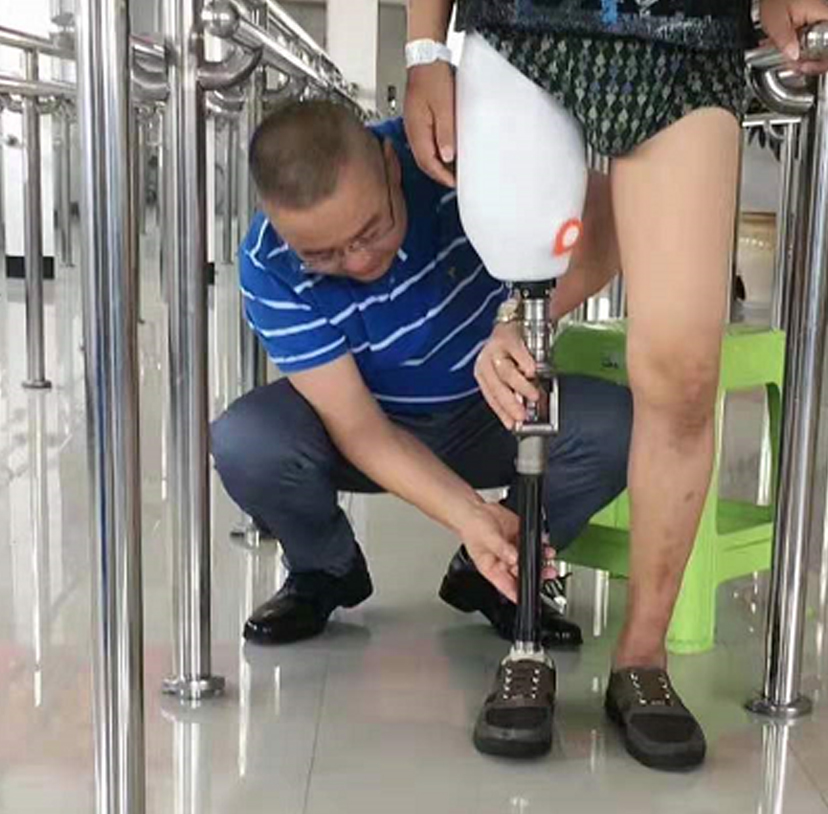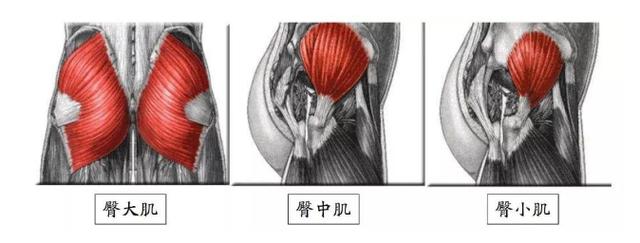News Center
Exercising this body part well is the first step in prosthetic rehabilitation
2021-08-10 Hits:
Wearing a prosthesis is always full of pain, in spite of the technical problem of prosthesis, what can we do?
There are more solutions than problems!
When we are missing a limb, our whole functioning is affected because of the complex structure of the human body.
For example, patients with thigh amputations are prone to "abduction + flexion".
What's the reason?
The body controls flexing muscles more than abducting muscles.
First of all, we need to basically understand the structure of the human buttocks.



上一篇:Why do you wear prosthetics repeatedly chafed, even changed color? 下一篇:To avoid the myth of prosthetic, which prosthetic should be chosen?Find a prosthetic that fits you?
There are more solutions than problems!
When we are missing a limb, our whole functioning is affected because of the complex structure of the human body.
For example, patients with thigh amputations are prone to "abduction + flexion".
What's the reason?
The body controls flexing muscles more than abducting muscles.
First of all, we need to basically understand the structure of the human buttocks.
1. Major muscles of hip abduction
Adduction: adductor magnus, biceps femoris longhead, adductor longus
Abduct: tensor fascia lata with gluteus medius
(Adductor magnus and gluteus medius are ignored)
2. "Major muscles" in flexion and extension of the hip
Stretch: biceps femoris, gluteus maximus, half bond half membrane;
Flexion: iliopsoas, quadriceps femoris;
(The gluteus maximus and iliopsoas muscles are too high to be considered)
The strongest quadriceps muscle would have stopped at the thick rib of the tibia.
But the amputation, the femoral end can only be fixed in a stretched state, the hip joint is flexed, and the biceps femoris and the half bond and half membrane are no better than the quadriceps.
Since the tensor fascia latissima is much stronger than the adductor longus and biceps femoris, the thigh is also abducted.
Therefore, the higher the amputation site of the thigh amputee, the more "abduction + flexion" of the stump.
Adduction: adductor magnus, biceps femoris longhead, adductor longus
Abduct: tensor fascia lata with gluteus medius
(Adductor magnus and gluteus medius are ignored)
2. "Major muscles" in flexion and extension of the hip
Stretch: biceps femoris, gluteus maximus, half bond half membrane;
Flexion: iliopsoas, quadriceps femoris;
(The gluteus maximus and iliopsoas muscles are too high to be considered)
The strongest quadriceps muscle would have stopped at the thick rib of the tibia.
But the amputation, the femoral end can only be fixed in a stretched state, the hip joint is flexed, and the biceps femoris and the half bond and half membrane are no better than the quadriceps.
Since the tensor fascia latissima is much stronger than the adductor longus and biceps femoris, the thigh is also abducted.
Therefore, the higher the amputation site of the thigh amputee, the more "abduction + flexion" of the stump.

Lower leg amputation can still affect overall balance, a problem that every amputee may face after amputation.
In order to the healthy operation of the body, we should especially pay attention to the exercise of the hip muscles after amputation, especially the gluteus medius.
When the hip joint rotates, the gluteus medius can directly affect the rotation of the hip joint. In order to stabilize the body and move the body's center of gravity, the gluteus medius and the peripheral muscles need to work together to balance the rotation torque of the hip joint.
Joint contracture can easily occur in amputees due to muscle imbalance in the stump.
Once muscle contracture occurs, it will have a serious impact on prosthetic limb design, installation and walking training.
Therefore, it is very important to maintain the functional position of the affected limb early to avoid the prone error position.
In order to the healthy operation of the body, we should especially pay attention to the exercise of the hip muscles after amputation, especially the gluteus medius.
When the hip joint rotates, the gluteus medius can directly affect the rotation of the hip joint. In order to stabilize the body and move the body's center of gravity, the gluteus medius and the peripheral muscles need to work together to balance the rotation torque of the hip joint.
Joint contracture can easily occur in amputees due to muscle imbalance in the stump.
Once muscle contracture occurs, it will have a serious impact on prosthetic limb design, installation and walking training.
Therefore, it is very important to maintain the functional position of the affected limb early to avoid the prone error position.

Is stump training important?
Promote stump keratinization training
In order to promote the keratinization of stump skin, take therapeutic mud and squeeze the stump of amputation 10-20 times a day.
Or put the stump on the mud to do pressure or support action, catenary the stump skin.
Take fine sand and rub it at the stump, 5 times a day, 2 minutes each time, 5 minutes apart.
Then, the patient was asked to place the stump in the sand and squeeze and rotate it for about 1 minute. The examination can be repeated 4-5 times if there is no skin damage.
When stump has formed corneous layer, usable rice grain replaces remedial mud or fine sand, undertake the training of same method, improve the wear resistance of stump skin.
Stump weight training
Post-amputation patients should begin weight training on the stump as early as possible, which can be done by wrapping the stump with a protective pad.
For example, patients with bilateral lower limb amputation, with the help of self-made support to practice stump weight walking.
The single-leg amputee has a wooden bench adjusted to the corresponding height within the parallel bar, with a cushion on the bench. The center of the body is shifted to the stump, so that the stump ADAPTS to the load.
Promote stump keratinization training
In order to promote the keratinization of stump skin, take therapeutic mud and squeeze the stump of amputation 10-20 times a day.
Or put the stump on the mud to do pressure or support action, catenary the stump skin.
Take fine sand and rub it at the stump, 5 times a day, 2 minutes each time, 5 minutes apart.
Then, the patient was asked to place the stump in the sand and squeeze and rotate it for about 1 minute. The examination can be repeated 4-5 times if there is no skin damage.
When stump has formed corneous layer, usable rice grain replaces remedial mud or fine sand, undertake the training of same method, improve the wear resistance of stump skin.
Stump weight training
Post-amputation patients should begin weight training on the stump as early as possible, which can be done by wrapping the stump with a protective pad.
For example, patients with bilateral lower limb amputation, with the help of self-made support to practice stump weight walking.
The single-leg amputee has a wooden bench adjusted to the corresponding height within the parallel bar, with a cushion on the bench. The center of the body is shifted to the stump, so that the stump ADAPTS to the load.
上一篇:Why do you wear prosthetics repeatedly chafed, even changed color? 下一篇:To avoid the myth of prosthetic, which prosthetic should be chosen?Find a prosthetic that fits you?
 DISA GLOBAL WEBSITE
DISA GLOBAL WEBSITE 


